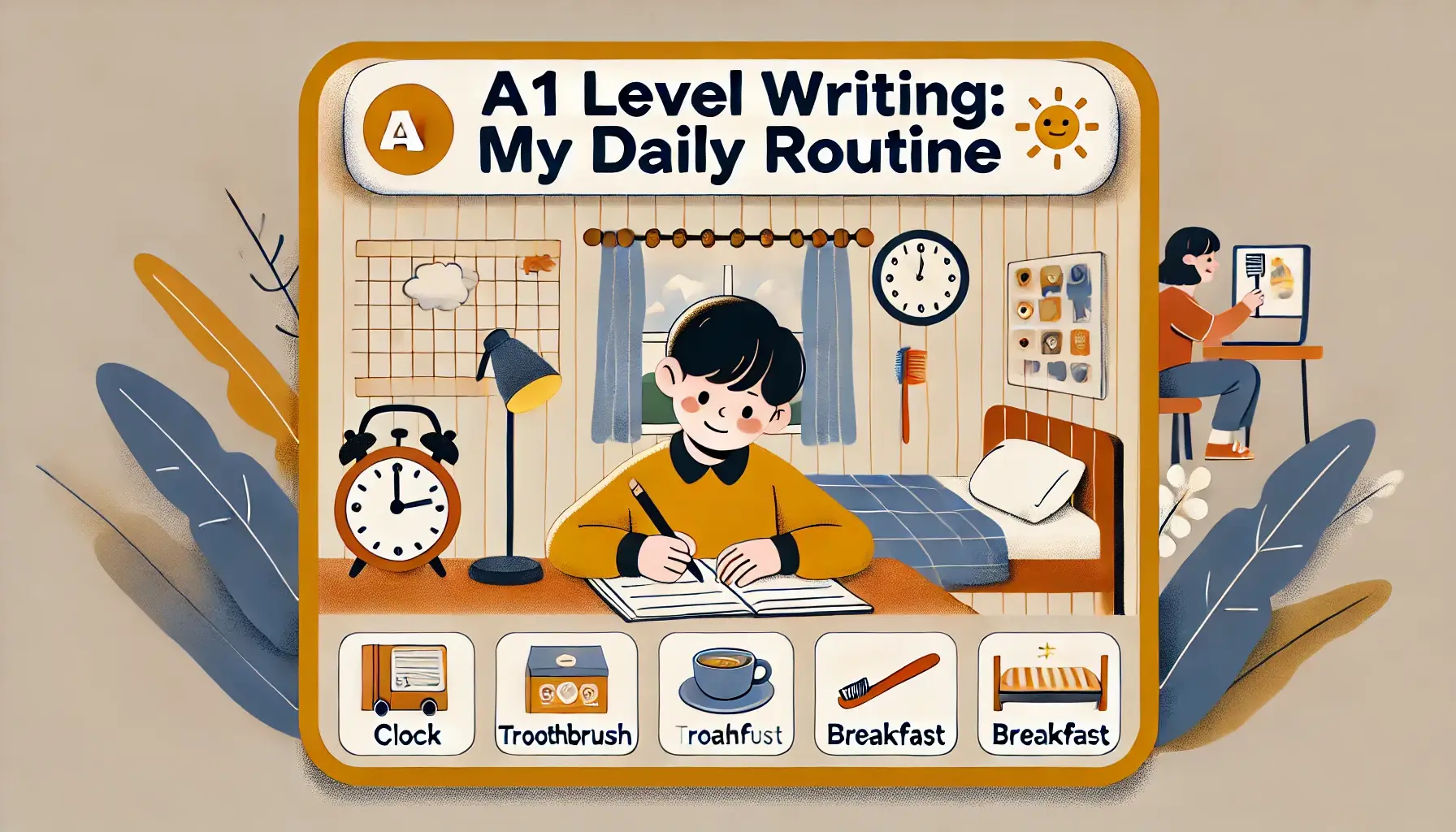Writing about my daily routine
- Home ›
- Writing ›
- A1 Elementary ›
- Writing about my daily ro...




Check the ‘Explanation’ tab above before doing these exercises. Complete the text below with the words in the box.
Choose the correct option to complete each sentence.
Choose the correct option to complete each sentence.

- 18 November, 2024
- 673
- Writing
- A1 Elementary
Writing about my daily routine
Writing about your daily routine is a simple way for A1 English learners to practice using the Present Simple tense, time expressions, and everyday vocabulary. Here’s a step-by-step guide to help you get started:
1. Make a List of Daily Activities
Begin by thinking about the activities you do every day. Make a list with common actions like: wake up, brush my teeth, have breakfast, go to work or school, check my emails, have lunch, go home, do homework, watch TV, and go to bed. This list will help you organize your routine and create sentences.
Tip: Remember to use the correct expressions. We say “go home” (not “go to home”) and “go to school/work” (not “go to the school/work”).
2. Use Present Simple Sentences
When describing your routine, use the Present Simple tense. Write sentences for each activity on your list. For example:
- "I wake up at 7:00."
- "I have breakfast with my family."
- "I go to work at 9:00."
3. Add Adverbs of Frequency
Make your writing more interesting by using adverbs of frequency such as always, usually, sometimes, and never. These words show how often you do each activity. For example:
- "I usually have coffee for breakfast."
- "Sometimes, I go for a walk after dinner."
4. Use Connectors and Time Expressions
To make your writing flow better, add connectors (and, or, but, because) and time expressions (then, after that, next, in the morning). This makes your routine sound less like a list and more like a story. For example:
"I get up at 7:00 and brush my teeth. After that, I have breakfast. Then, I go to work."
5. Write in Paragraphs
Organize your routine into three simple paragraphs:
- Paragraph 1: Morning activities (e.g., waking up, breakfast)
- Paragraph 2: Daytime activities (e.g., work, school, lunch)
- Paragraph 3: Evening activities (e.g., dinner, relaxing, bedtime)
Example:
“I wake up at 7:00 and brush my teeth. After that, I have breakfast with my family. Then, I get dressed and go to school.
At school, I have lessons and lunch with my friends. After lunch, we continue our classes until 3:00. Then, I go home and do my homework.
In the evening, I have dinner, watch TV with my family, and relax. I go to bed around 10:00.”
Unfortunately, we currently do not have teaching materials available on this topic. We are working with all our efforts to prepare it. You can subscribe to Verbooze to be notified once the teaching materials are ready.




English Learning Made Easy & Accessible for Everyone
Boost your English skills with interactive lessons, grammar explanations, reading and listening exercises, and real-time feedback. Join our growing community and start improving today — all completely free!

